Not too long ago, fortified wines held a coveted status, admired for their strength, resilience, and the delicate balance between sweetness and dryness. Today, ancient traditions and masterful winemaking techniques ensure that ports, sherries, madeira, and their counterparts remain among the world’s most exquisite beverages. The realm of fortified wines invites enthusiasts on a captivating journey through diverse regions, grape varieties, and production methods. From the historic cellars of Porto to the sun-drenched vineyards of Jerez, each fortified wine narrates a distinct tale. Whether enjoyed on its own or incorporated into culinary creations, fortified wines continue to enthrall wine enthusiasts globally, presenting an unmatched blend of tradition and innovation in every glass.
KEY CHOICES AFFECTING STYLE, QUALITY, AND PRICE IN FORTIFIED WINES
Fortified wines are made in a very diverse range of styles; red, white, and rosé; dry to sweet; and youthful and aromatic to fully developed and oxidative. Below we look to highlight the principal wines of this category and some of the key production stages, the choices that influence the style, quality, and price:
Grape variety
The grape variety may either provide its own aroma and flavor characteristics to the wine or be simply used as a relatively neutral base for the flavors of maturation to build upon. Vins Doux Naturels (VDNs) from Muscat are the most obvious example of a fortified wine where the grape variety provides the main flavors of the wine, and this is enhanced by protective winemaking and early release from the winery. Even in Rutherglen Muscat, where the wines have been aged in warm and oxidative conditions, the aromatic notes of Muscat are still notable in the best wines. By comparison, Palomino is a relatively neutral variety, and the characteristic aromas of sherry all come from the maturation process.

Structural components such as acidity, and in black grapes, color, and tannin, are also important factors. Madeira, notable for its high acidity, is made with a number of grape varieties, such as Sercial and Verdelho, that have naturally high levels of acidity. By comparison, although the combination of a bone-dry palate and high alcohol can give a sensation similar to acidity in some sherries, the actual level of acidity is low, a characteristic of the Palomino grape.
Color is an important consideration in red wines. Port is usually made from a blend of grape varieties and one of the factors considered in the blend will be attaining a suitable level of color in the base wine. The aims are very different in a basic Tawny Port, which needs to look aged in a short period of time and hence will be made from wines that are light in color when compared to, for instance, a Vintage Port, which will be expected to retain a deep color over decades of bottle maturation. For the latter case, grape varieties that can enhance the intensity of color include Touriga Nacional and Sousão.

In a similar way to color, the level of tannins in black grape varieties will also be influential. High levels of tannins are neither required nor desirable in early drinking styles of red fortified wines such as Ruby Port or Maury Grenat. By comparison, the role of tannins in color stability makes medium (+) or high levels of tannins beneficial in long-aged wines. Tannins soften with age, and therefore in these wines, even high levels of tannins can become integrated into the wine and, on the palate, provide the necessary structure and balance.
Vineyard site
As well as the grape variety, vineyard location, and climate are important influences on the base material used in the production of fortified wines. The vineyards of the Douro are scored according to factors such as location, aspect, and altitude, and this score determines how much Port wine that plot of land can produce. Vintage Ports will often be made from the grapes of certain vineyard plots known for their ability to produce outstanding-quality wines that will age well.
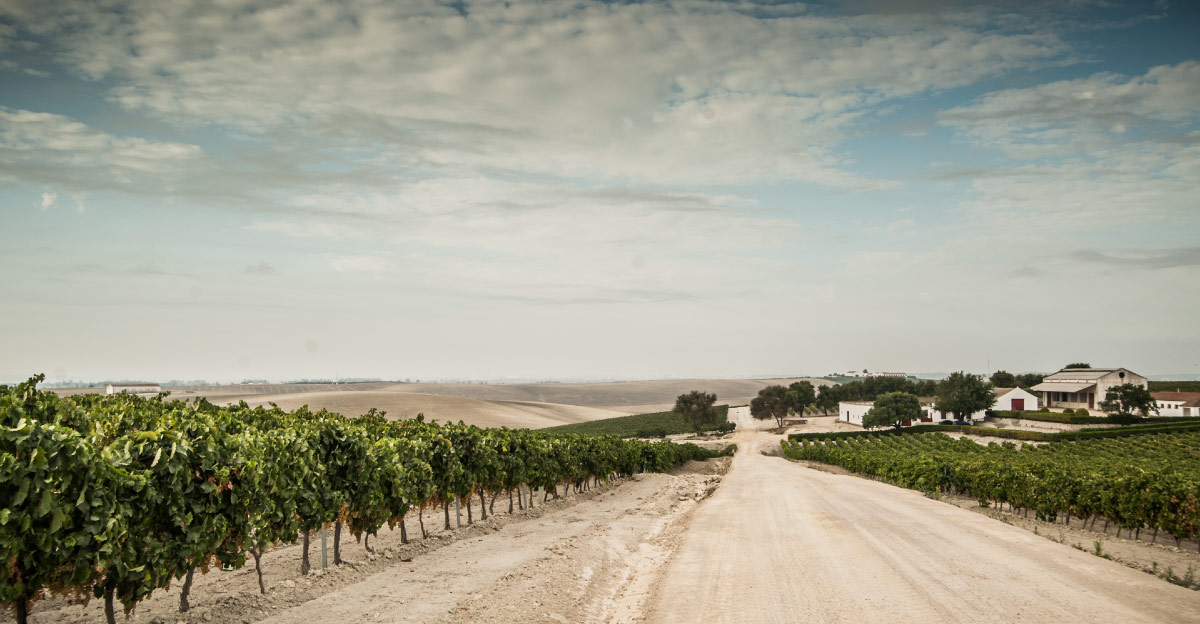
Vineyard sites can also influence the style of Muscat-based VDNs. Muscat de Frontignan in the Languedoc produces slightly fuller wines with riper flavors from low-altitude vineyards, than the high-altitude sites of Muscat de St-Jean-de-Minervois.
Timing of harvest
The timing of harvest is also an important consideration in many styles of fortified wines. In no case is botrytis, even as ‘noble rot’, desirable, and therefore growers will be looking to harvest before the increased risk of rain, and therefore the increased humidity, in the autumn. For some styles, the fruit will be picked when it reaches or goes just beyond the minimum level of potential alcohol required by law. Unripe fruit flavors will be avoided, but in the case of sherry made from palomino, the potential alcohol and health of the grapes are much more important for determining the harvesting date than the range of flavors in the grapes.
In other styles, such as Rutherglen Muscat, Pedro Ximénez (PX), and Moscatel sherry, the grapes are typically left on the vine longer in the season to concentrate the sugars, necessary in these wines that have very high levels of residual sugar. As we know, in Jerez, PXs will see their sugar levels further increased by the subsequent sun-drying method.
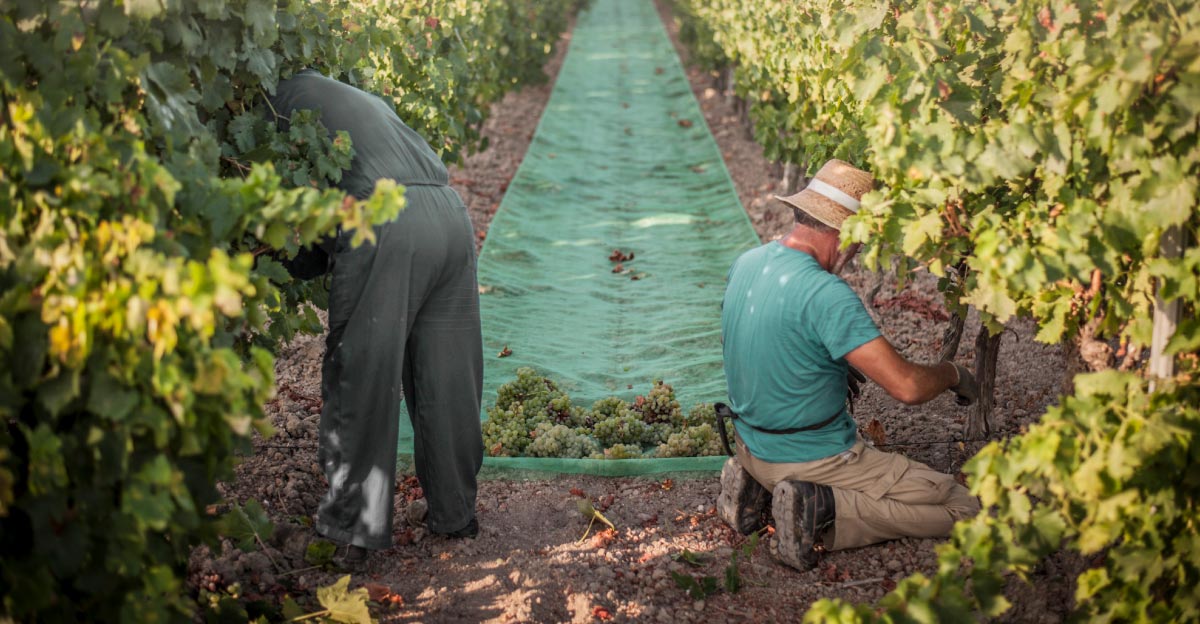
Soleo. Pedro ximénez grapes being sun-dried by being exposed to the sun.
Skin contact and extraction
The extraction of color, tannins, and flavor from the grape skins is a key process in the production of red fortified wines. These wines are often sweet and made by adding the fortifying alcohol midway through the fermentation process, limiting the period of maceration to as little as 2-3 days. Especially in wines that are to undergo long aging and hence need high concentrations of color, tannin, and flavors, this means that extraction techniques need to be as effective as possible. The Port industry, in particular, has developed specialized equipment that permits maximum extraction whilst remaining gentle enough not to crush seeds and release bitter tannins. The contrast to this is the production of basic Tawny and Rosé Ports in which less extraction is desirable to create wines with a paler appearance.
Some producers of white fortified wines such as Madeira, Muscat-based VDNs, and White Port, may let their white grapes macerate for a limited time on skins,generally to increase body, and texture and extract additional flavors. By contrast, skin contact is not desirable for biologically aged sherries such as fino and manzanilla, as the phenolic compounds extracted can restrict the growth of flor-yeast.
Timing of fortification
Dry fortified wines, like most sherries, are fortified once fermentation is complete, although a majority of sweet, fortified wines, are produced by fortifying midway through fermentation. This is attained by stopping the fermentation and raising the overall alcohol level above that at which yeasts can operate and leaving residual sugar that was present in the grapes. Producers will usually calculate the timing of fortification according to the level of residual sugar that is desired in the final wine, the greater the amount of sugar, the earlier the fortification.
Some styles of sherries such as pale cream, medium, and cream are made by fermenting the wine to dryness and then adding a sweetening component. This can create wines in different styles than would be possible by fortifying during fermentation. In the example of cream sherry, a dry oloroso is often blended with PX, combining the characteristics of aged, dry palomino with raisined PX.
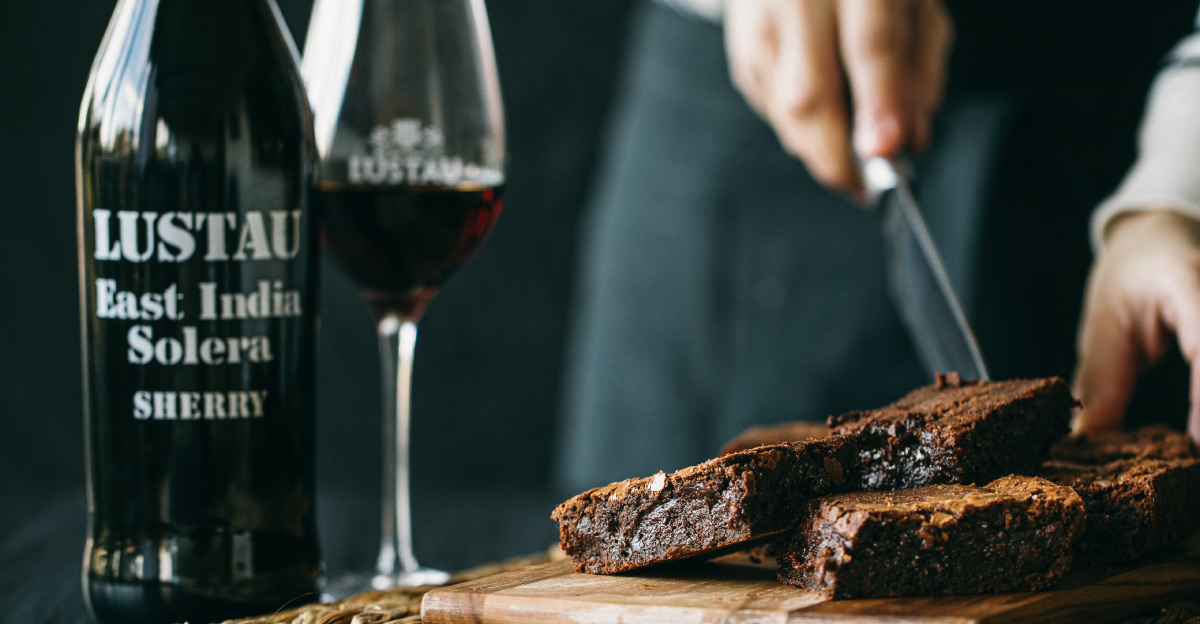
East India: The perfect example of a blended sherry wine.
The fortifying spirit
Most fortified wines are fortified with 95-96% ABV grape spirit. Spirits with such high alcohol content are neutral in aroma and flavor and do not mask the characteristics of the wine. Furthermore, the high level of alcohol minimizes the volume of spirit needed to bring the fortified wine to the required alcoholic strength (usually between 15-22% ABV depending on style) leading to less dilution of the base wine.
The exception is Port, which must be fortified with a grape spirit of 77% ABV (+/- 0.5%). As the spirit is distilled to a lower level of alcohol, it is more distinctive and contributes more of its own aroma and flavor characteristics to the blend. Also due to its lower strength, a significant volume of spirit is required to bring the partially fermented must up to its required alcoholic strength of 19- 22% ABV, again, meaning that the style and quality of the spirit have an important influence on the style and quality of the final wine. Although some producers choose to use more aromatic styles of spirit, especially in red Ports, in Rosé Ports a relatively subtle spirit will be chosen so as not to overpower this more delicate style of wine. The strength and volume of the fortifying spirit influence the final alcohol level of the wine.
Maturation
The maturation process is a defining stage in the production of many fortified wines. Some fortified wines, including several VDNs, Ruby and Rosé Ports, and some White Ports, are released relatively early from the winery with the intention that they should be drunk soon after release. Often, these wines are stored in stainless steel or concrete and are protected from oxygen; therefore, showing youthful, primary flavors.
Some special styles are also released after a short period of aging with the intention that they will improve in bottle over long periods. These wines, which include Vintage and some LBV Ports, will be stored for a few years in large oak vessels before bottling. As these wines are designed to age in the bottle, they will generally be very concentrated with high levels of tannins on release. After several years in bottle, the fresh fruit starts to develop into dried fruit, and the tannins soften and integrate.
Other fortified wines, such as premium Tawny Ports, Madeiras, Rutherglen Muscats, and some styles of VDNs and sherries, are aged oxidatively, often for extended periods. Their maturation is usually carried out in relatively small wooden vessels to encourage oxygen exposure. The small size also increases the rate of evaporation from the vessel and leads to ullage. It is a choice of the winemaker how often to top-up the vessels and as part of managing exposure to oxygen. A number of these wines are also matured in warm or heated conditions, which further speeds up oxidation, evaporation, and general maturation. Oxidative aging tends to develop aromas of nuts, caramel, and dried fruits.
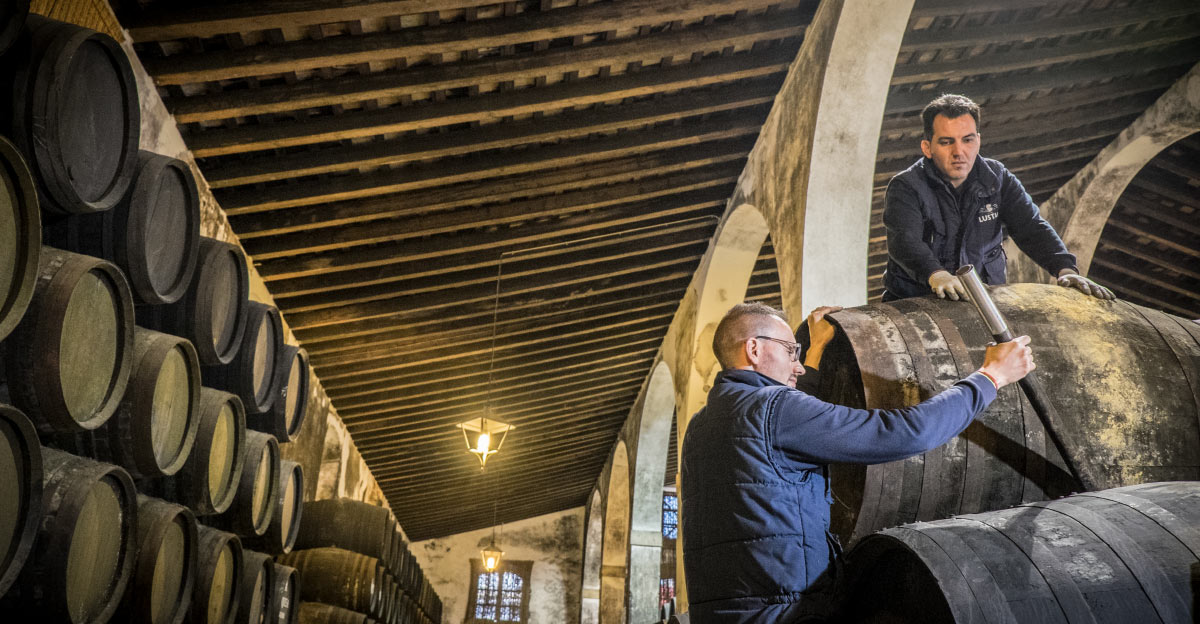
Another technique is biological aging; used for fino and manzanilla sherries. These wines are aged under a veil of flor-yeast which, on the contrary, protects the wine from oxidation while lowering the levels of several compounds including glycerol (and hence body), and contributing aromas of hay, apple skin, bread dough, and fresh nuts.
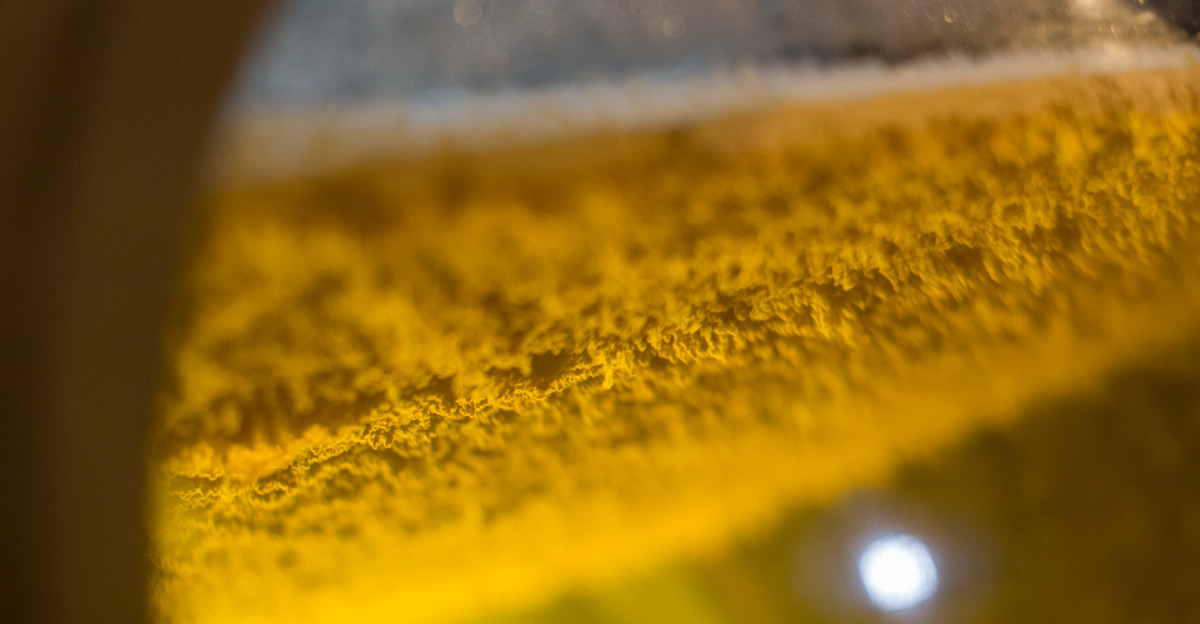
• Rancio: Rancio is a tasting term used to describe a collection of aromas and flavors that are found in some styles of wines. Aromas are varied but typical descriptors and include leather, wood, varnish, and strong coffee, among others.
• Maderisation: process whereby a wine is heated and oxidized is sometimes known as maderisation; the term takes its name from the process of maturation of Madeira wines that has been in use for several centuries.
Blending
Blending is one of the most important processes in fortified wine production. Grapes, musts, or wines from different grape varieties, vintages, and vineyard sites may all be blended, depending on the regulations for the wine style being made.
The key aims of blending include:
• Balance – The components that need balancing will differ depending on the style of the wine. For all fortified wines, alcohol is relatively high (compared to unfortified wines), and therefore in wines of good quality and above, this should be integrated within the other components of the wine. As stated in maturation, many styles of fortified wines undergo long periods of aging. These wines become increasingly concentrated and lose their primary fruit characteristics. Although these wines are complex, a better balance in the final wine is usually achieved by blending some younger wines with the older wines, to provide a degree of freshness against the developed flavors. This is a practice that is particularly notable in sherry production and Rutherglen Muscat.
• Consistency – Many fortified wines are non-vintage products and therefore it is expected that they will show consistency year on year. In some regions, the wines of different vintages mature separately (called “static” maturation). At a certain point, skilled blenders will taste various wines from different vintages and use their experience to create the blend. In sherry production, a solera system is used. This is a method of fractional blending that ensures consistency amongst the vessels of a particular age. A modified version of a solera system is also used for Rutherglen Muscat.
• Style – Blending is an essential method of influencing style. In Port, the blend of grape varieties will be an important factor in the level of color, tannin, and flavor concentration in the young wine and therefore its ability to age. In sweetened sherries, the blending of the sweetening component, such as PX wine, completely transforms the style of the final wine. Brands are important when evaluating most fortified wine categories, the blending is often used to create a certain ‘house style’ across the product range.
• Complexity – Similarly to the above points, wines of different ages, or that have been treated differently in the winery, may be blended to gain a greater range of flavors.
• Volume – In most regions producing fortified wines, vineyard holdings are small and therefore it is necessary to blend grapes from several different growers. Also, some fortified wines are matured in small vessels and therefore blending of these vessels is usually needed before bottling to make up a sufficient volume of consistent wine.
• Price – Fortified wines can reach premium and super-premium prices, yet a significant proportion of the total sales volumes are made up of wines that are mid-priced to even inexpensive ones. Meeting a competitive price point is essential to obtain the best value product. The producer may decide to add a small amount of older wine to give some complexity to a blend of younger simpler wines.
Finishing
As is the case in general wine production, most fortified wines will be stabilized, refined, and filtered before bottling to ensure they are clean and clear for the consumer.
Some styles of Port, such as Vintage, Single Quinta, Crusted, and some LBVs, are purposely not filtered so they continue to develop in bottle. Sediment may be noticed when these wines are opened and poured, and decanting or passing the wine through a wine funnel and filter may be necessary.
Equally, some styles of sherry termed ‘En Rama’ either undergo a light filtration or are not filtered at all. In style, they are generally more pronounced and complex than their refined and filtered counterparts.
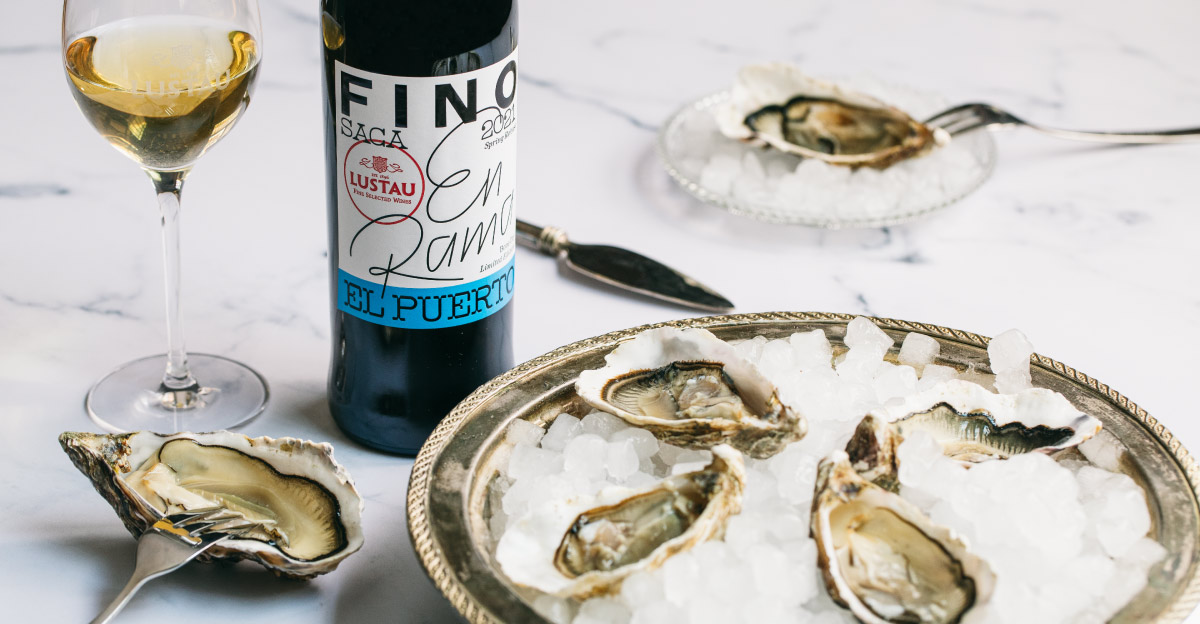
Tasting fortified wines (using WSET standards)
When tasting fortified wines, the Systematic Approach to Tasting (SAT) should be used in much the same way as it is used for unfortified wines. The one area of difference is the assessment of the level of alcohol. The fortified wines in the specification all have alcohol levels of 15% ABV or higher, and therefore all would be ‘high’ if calibrated on the same scale as unfortified wines.
Therefore, the scale for alcohol in fortified wines is:
• Low: 15 – 16.4% ABV
• Medium: 16.5 – 18.4% ABV
• High: 18.5% ABV and above
THE SELL AND PROMOTION OF FORTIFIED WINES
Promoting and selling fortified wines to the masses requires a strategic approach that often considers the unique characteristics of each type of fortified wine and the preferences of diverse consumer segments. Here are known strategies for promoting and selling various types of fortified wines in the global market (we also added an example of what Lustau does for each of them):
1. Educational Marketing:
◦ Develop educational campaigns to increase awareness about fortified wines and their diverse styles. Highlight the unique production methods, grape varieties, and regional characteristics of each type of fortified wine.
◦ Utilize social media platforms, blogs, and online resources to share engaging content, such as videos, infographics, and articles, educating consumers about the rich history and versatility of fortified wines.
An example by Lustau:
2. Tasting Events and Experiences:
◦ Organize tastings and events that showcase the different styles of fortified wines. Collaborate with wine educators, sommeliers, and chefs to create immersive experiences that pair fortified wines with complementary foods.
◦ Host virtual tastings to reach a wider audience, allowing consumers from different parts of the world to participate and learn about fortified wines from the comfort of their homes.
An example by Lustau
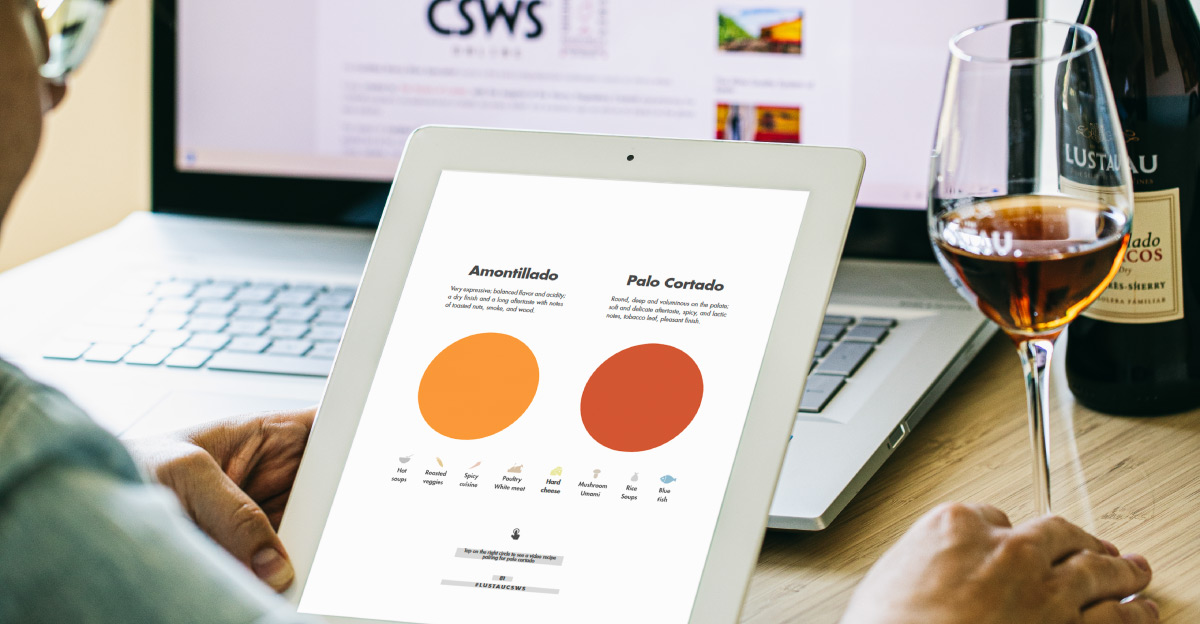
3. Collaborations and Partnerships:
◦ Collaborate with restaurants, bars, and retailers to feature fortified wines on their menus or shelves. Offer special promotions, discounts, or exclusive events to encourage partnerships.
◦ Partner with international distributors and importers to expand the availability of fortified wines in key markets. Establish relationships with local distributors who understand the preferences and regulations of specific regions.
An example by Lustau
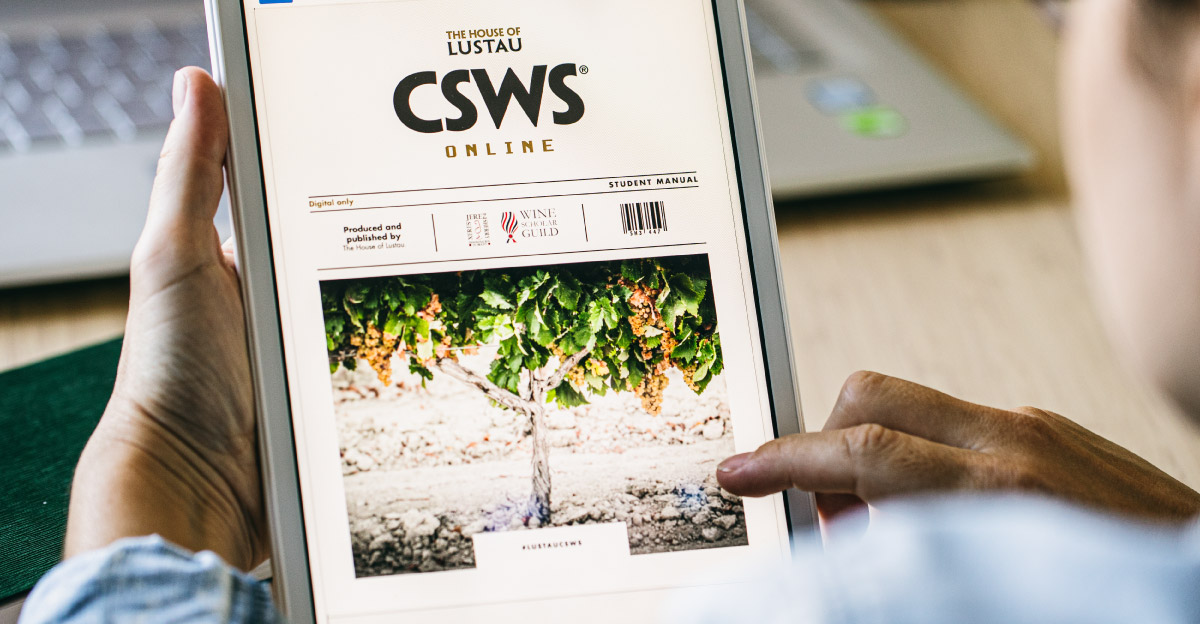
4. Cultural and Culinary Pairing:
◦ Emphasize the cultural and culinary aspects of fortified wines. Position them as ideal companions for diverse cuisines, ranging from traditional dishes to modern fusion creations.
◦ Collaborate with chefs and influencers to create recipes and pairings that showcase the versatility of fortified wines. Highlight how different styles complement various flavors and enhance the dining experience.
An example by Lustau:
5. Branding and Packaging Innovation:
◦ Invest in visually appealing and informative packaging that communicates the uniqueness of each fortified wine. Consider using labels or packaging that reflects the heritage and tradition associated with the specific region of origin.
◦ Develop branding strategies that resonate with the target audience. Highlight sustainability practices, traditional craftsmanship, or other unique selling points that differentiate fortified wines in a competitive market.
An example by Lustau:
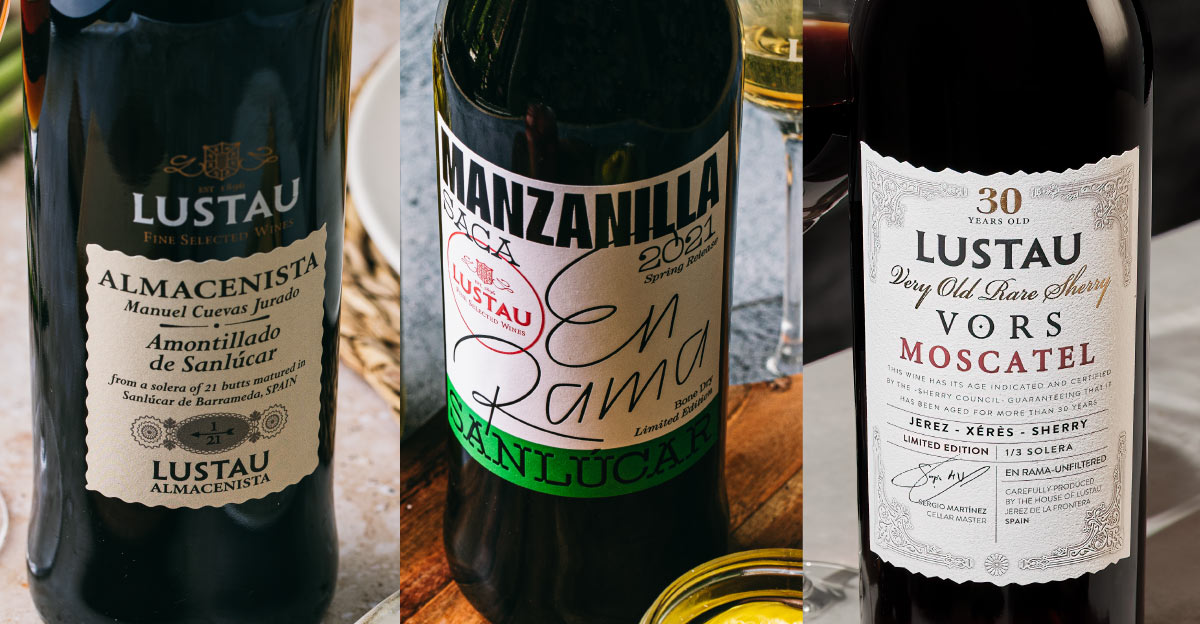
6. Online Sales and E-Commerce:
◦ Establish a strong online presence through e-commerce platforms. Ensure that consumers can easily purchase fortified wines directly from the producer’s website or through reputable online retailers.
◦ Leverage digital marketing channels, including social media advertising, search engine optimization, and email campaigns, to reach potential customers globally.
An example by Lustau
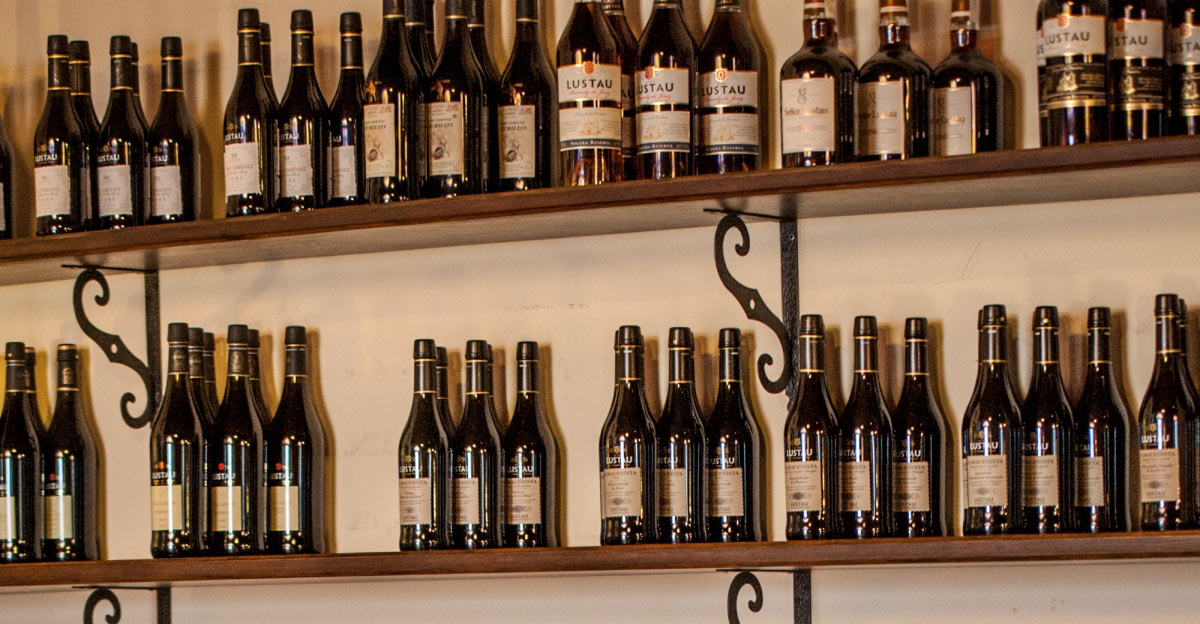
7. Participation in International Wine Competitions:
◦ Submit fortified wines to reputable international wine competitions. Winning awards can enhance the credibility and visibility of the wines, attracting the attention of consumers, retailers, and distributors.
◦ Display any accolades prominently on packaging, promotional materials, and online platforms to build trust and confidence among consumers.
An example by Lustau
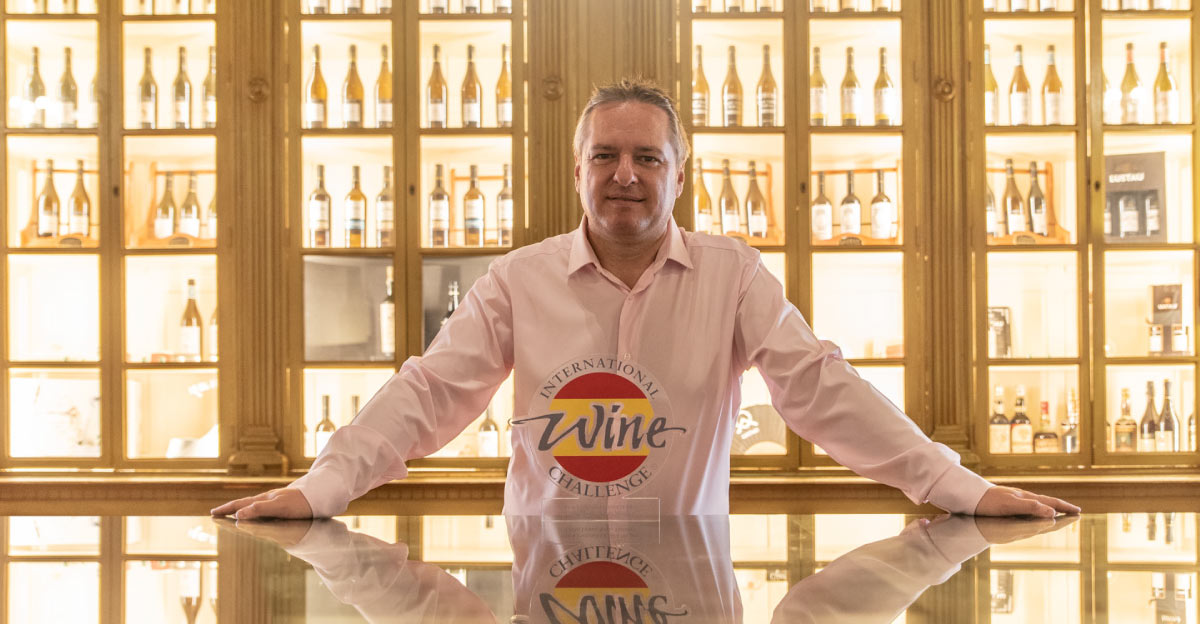
By implementing a combination of these strategies, producers, and distributors effectively promote and sell various types of fortified wines in the international markets, appealing to a diverse range of consumers with different tastes and preferences.
BRIEF SALES INSIGHTS
It is too soon into the new year for data on results for 2023, to be available. In retrospect fortified wines have demonstrated permanency throughout the decades with fluctuations, dropping and later stabilizing, with growth unfortunately not consistent year to year. We reached out to Robert Walsh National Sales Director with Europvin Inc., the US importer of Lustau, that commented “Data shows that overall consumption peaked in 2021 at 3.14 gallons per person (Wine Institute), then fell to 2.86 gallons per person in 2022.” There is always speculation, there is no predominant reason other than it’s influenced by consumer group preferences. According to Walsh, an apparent “move to lower ABV offerings and seltzers” and no-ABV marketing may have played a part.
The IRI data also shows that the category is fractured with many producers competing for a small piece of real estate on the shelf. From a value standpoint this is the breakdown:
• Imported Port: $14.9M
• Imported Sherry: $3.4M
• Imported Marsala: $2.3M
• Imported Maderia: $133K
• Other fortified: $669K
Specifically on fortified wines, his opinion is that “the traditional consumer is aging and consuming less, however, the rise in craft cocktails presents an opportunity to gain share. Most major retailers across the US carry fortified wines but unfortunately the category is likely to be a ‘check the box’ segment to offer a complete set. Therefore, the combination of an ambivalent retailer and a limited consumer base presents the largest challenge for the category as a whole”. The changes taking place in the last couple of years are also limiting with a “decline in in-store tastings post Covid as retailers reserve limited space and time for tastings of table wines that will sell in volume versus bottles. Overall, the potential for volume profit overrides the possibility for discovery. Retailers typically have an LBV, a ruby, a tawny, possibly an aged tawny, and Maderia in the premium category, and 1 sweet & dry Marsala plus inexpensive offerings on the bottom shelf. Sherry at major retailers will typically have lower priced/quality options with few premium offerings.”
“Port, Madeira, and Marsala continue to market to traditional consumers and a few historical players dominate their respective categories. The question is how to attract new consumers to the category… sherries and vermouth have been branching out to a new consumer via cocktails. However, it is crucial not to go after only becoming a mixer, as often consumers are not aware of the ingredients being used.”
Another of Walsh’s observations is that he has not seen “much crossover among the category drinkers” that would help raise awareness and consumption of the value and beauty of these wines, “the category as such has tremendous diversity that may be fundamental to the lack of consumer understanding of the styles, therefore, we must appeal to their curiosity to taste”.
In pursuing further input from an importer’s point of view that would bring additional clarity on working to develop the fortified wine category, we also spoke to Eric Seed of Haus Alpenz. To Haus Alpenz it’s their continuous study of current consumer trends exploring strategies that can specifically drive new business; “We also seek to learn more… explaining the production, profiles, and applications”. Stating what probably all category producers and sales networks long for “If only we had some secret sauce to grow the market for aged/oxidative wines, we’ll stay the course, educating both new and existing customers as we know the many various profiles are compelling, and in time we trust the trends will turn our way”.

As these conversations included opinions from the import tier, it was important to also hear the retail perspective as this seems to be the key connecting link to increased volume consumption and therefore sales. We communicated with one of the largest Illinois retail chains, Binny’s, their success with selling fortified wines is unprecedented in the US. They have succeeded in an area where other retailers have barely scratched the surface of opportunities and it leads us to consider if other stores may demonstrate these results by applying similar programs and tools. Binny’s Director of Sales, Doug Jeffirs, firmly believes that the success with the fortified category at their stores is principally due to their customers. “We are extremely fortunate to have a diverse and loyal customer following.
In-home consumption drives these kinds of sales, and we’ve seen a gaining interest in classes, food pairings, and cocktail creations with sherry, especially with younger customers.”
Additionally having, a “very well-educated staff that goes to great lengths to provide solid and well-rounded education”. Binny’s offers their staff in-house specialized education and maintains a partnership with the Wine & Spirits Education Trust, the knowledge of the wines is fundamental to recommending them. He shared that the “goal is to have a very full and diverse events program at our 10 full-sized classrooms” from where they host industry experts throughout the year.







